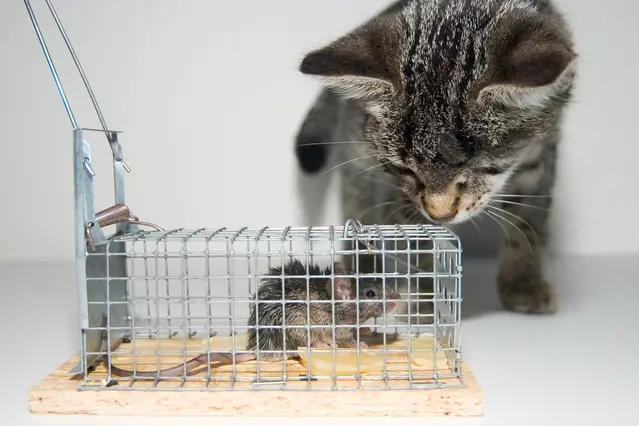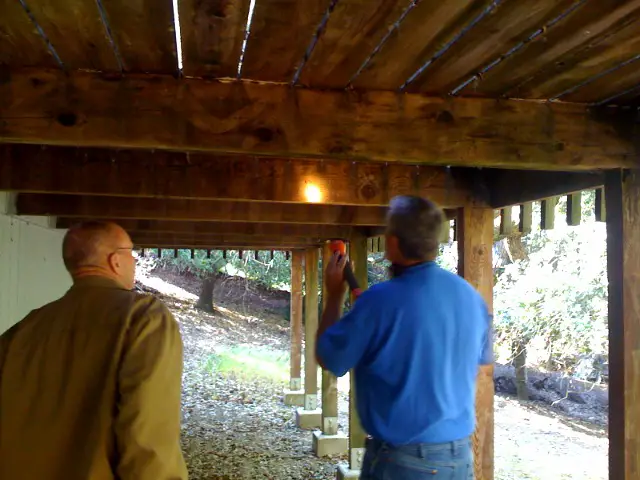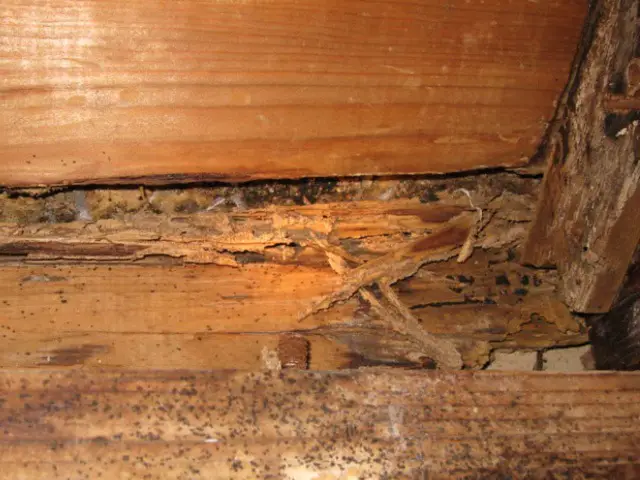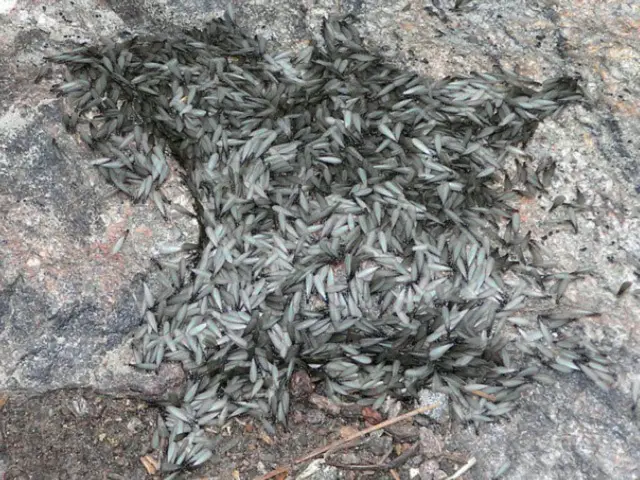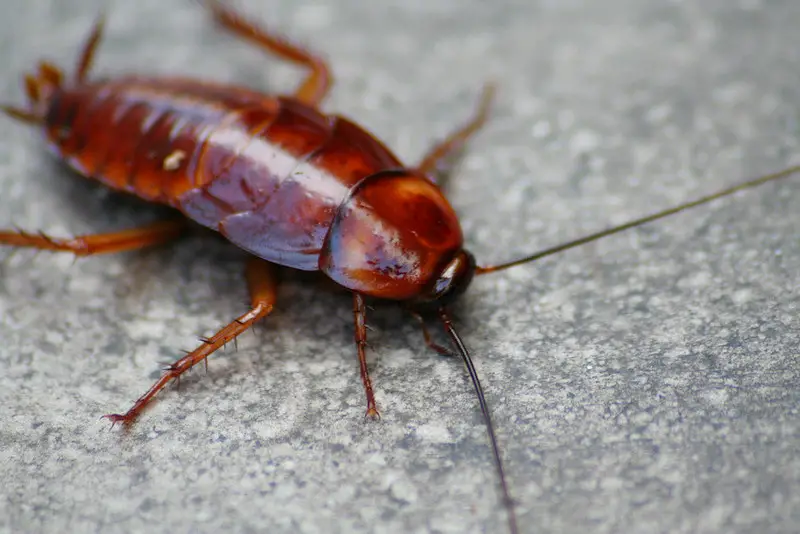No-kill traps for mice are effective. If you are looking for a humane mousetrap, consider a no-kill mousetrap. The no-kill traps offer a humane way to catch mice without killing them. A no-kill mousetrap is also more effective than a mouse repellent.
No-kill mousetraps work by luring the mouse inside on one side of the trap. They are engineered so a mouse can enter from one side, but once in the trap triggers and spring mechanism, the doors slam shut, capturing but not killing the mouse inside.
Each pest control method has its advantages and disadvantages. If you are looking for a humane way to control mice around your home, a no-kill trap might be the best option especially, since most people don’t know how to use poison baits correctly. Also, many people place poison bait and forget it. With poison, there is always a risk if the bait is not safely applied and monitored. If you have small children or pets, it’s understandable if you’d rather avoid the use of kill traps or toxic mouse baits.
Trapping mice is more labor-intensive than placing bait. And trapping mice with live mousetraps is even more work. You have to frequently check the trap. And you have to make sure there’s bait and that the trap is in working order.
Suggested article: “How long can a mouse live without food?”
One of the biggest inconveniences to live mousetraps, though, is that you have to relocate the mice after you catch them.
Are no kill mousetraps effective?
No-kill mousetraps can be an effective method of humane pest control. They do the job of catching the mouse. The mousetraps are large enough for the rodents to get inside. The wire mesh allows for good airflow, so the mice don’t suffocate. It’s critical to quickly release the mice. If you keep the mouse inside the mousetrap, your no-kill mousetrap could become a kill trap.
Catch and release mousetraps?
The sensitive trigger of a catch and release mousetrap will catch the mouse the first time it enters. One big advantage of this humane mousetrap is that it is reusable from year to year.
Unfortunately, there are a few drawbacks with catch and release mousetraps:
- There is a little bit of a learning curve until you learn how to set the trap.
- Catch and release mousetraps only catch one mouse at a time.
- They are somewhat larger than snap traps.
No-kill DIY mousetraps
One of the best no-kill DIY mousetraps is the rolling log trap. To make a rolling log mouse trap you, you only need a few inexpensive or free items.
The most important component of a no-kill DIY rolling log mousetrap is the bucket. You can use a five-gallon plastic bucket. You can put some crumpled paper on the bottom to soften the fall for the mice. The crumpled paper will also make it more difficult for the mice to jump out. As you know, mice are excellent jumpers. A mouse can easily jump twice the height of its length. So, a seven-inch-long mouse can jump 14 inches without any problems.
For this DIY mousetrap, you’ll also need a rolling log. You can use a metal or PVC pipe for the log. But I’ve seen people use empty soda or beer cans too. To make sure the log spins easily, the rolling log mousetrap needs two ball bearings. You don’t need high-performance bearings. If you pay more than a couple of dollars for these, you have overpaid. You need to two bearings because there will be one on each end of the rolling log. You don’t need to add grease to the bearings. Grease would actually make this homemade mousetrap less effective. If you use a metal pipe for the log, make sure that bearings fit snuggly inside.
The mousetrap also needs a couple of bolts and fitting screws. The bolts should fit inside the bearings you use.
I recommend you use dog food as bait. Many people recommend peanut butter trap bait, but I think dog food is better. If you use peanut butter on the rolling log as bait, you are going to have to reapply it all the time. Also, peanut butter can make an awful mess of your mousetrap. Instead, you can use dog food pellets. And here’s the trick: glue the pellets to the rolling log with a hot glue gun. Because the pellets are glued to the rolling log, you know they will stay in position a lot longer than peanut butter would. It’s important to glue the trap bait evenly to make sure the rolling log spins easily.
If you want to make this DIY mousetrap even more effective, you can add an obstacle. Adding an obstacle in the middle of the rolling log will push the mouse to lose its balance even faster. All you need is a ring around the log in the middle. You can make the obstacle out of recycled bottles or wood. As the mice try to climb the obstacle, they will lose balance and fall in the bucket.
For the rolling log, you will drill holes on each side of the bucket. The holes are to hold the rolling log.
How to make a no-kill mousetrap?
Before you start to make a no-kill mousetrap, make sure you have the appropriate protective gear.
Make sure you have the required parts to make a rolling log mousetrap:
- Bucket or trash can – A five-galling bucket should work, but a ten-gallon trash can would work even better.
- Tools – You will need a drill and some sandpaper.
- Bolts and bearings – You need the bolts to hold the bearings. Make sure the bearings slide on the bolts easily. Make sure there is no grease inside the bearings.
- Ramps – You can use wooden baseboards for the two ramps of this mousetrap.
The first step is to drill holes on the side of the trash can. Drill a 3/8 hole on the side of the garbage can. The hole should be about four inches from the top of the trash can. Then, drill the second hole on the opposite side. You should have to holes on opposite sides. Both holes should be at the same height.
The next step is the assemble the bearings and bolts. The shoulder of the bolt should be toward the threads. Then, you the bearing on the bolt.
Then screw the nut to the bearing. Tighten it, so it firmly holds the bearing. Make sure the bearing spins freely after you have tightened the nut. Next, place the bolt with the bearing in the hole from the inside of the bucket and tighten it with another nut. Do the same on the other side of the trash can.
Finally, all you need to do is to tap the bearings in the metal pipe. Tap the outside of the bearing as you hammer it inside your metal or PVC pipe. You may need to sand the inside of your metal pipe to be able to tap the bearings in.
How to clean a no-kill mousetrap?
Leftover residues like the mouse’s body fluids affect the mousetrap’s effectiveness in catching mice. Even if you use a live trap and there is no dead mouse to clean up after, you still should clean a mousetrap. The mousetrap could have saliva, urine, blood, and leftover bait that should be cleaned.
Rinse the mousetrap with water and lather it with soap. Always handle mice traps while wearing gloves to minimize contact with the mouse residues. If you use a sponge, make sure it’s disposable. After cleaning the trap from all the residues, let the mousetrap air dry before using it again.
It’s critical to thoroughly clean around the mousetrap. It’s tempting to just vacuum or sweep the area. But to clean pathogens, you need to do more. Spray the entire area with an enzyme cleaner and let it sit for 20-30 minutes to allow the chemical to break down any biological material in the area. Use paper towels or disposable rags to wipe the site clean. Make sure to clean any fur or body fluids left by the mice. Finally, spray the area with a disinfectant.
How to set a no-kill mousetrap
You need a mousetrap to get rid of mice, but you also need to set it up correctly. Make sure to set the mousetrap in an area with mouse activity.
Mice have an excellent sense of smell. It’s best to keep your scent off the mousetrap, so make sure to wear gloves when setting up the trap. Gloves should also help protect from mouse-borne diseases.
Use the right bait to attract mice. Many people believe cheese to be the ideal mouse bait, but cheese isn’t the best option. Mice prefer to eat seeds or grains to cheese. Peanut butter also works. Dog food pellets also make great mousetrap bait.
No-kill outdoor mousetraps
If you are going to use a no-kill outdoor mousetrap, make sure it’s made of rust-resistant materials. Make sure that you’ll be able to check your outdoor mousetraps at least once a day. Stress inside the trap can harm or even kill the mice if not released within a day or so.
What are the advantages of live mousetraps?
- Wildlife and Pet Friendly – no poisonous baits required.
- Environmentally friendly – no poisonous substances to be washed into waterways or seep into the soil.
- Child-friendly – No poisonous baits or spring-loaded mechanism to snap shut on curious fingers or toes.
- No dead mice to dispose of – they fall into the trap and can be released into the wild. Catch all the mice in a mine-affected area (e.g garage/shed) and release at least a mile from your home.
- Simple and easy to use – you only require a bucket, a few tools and a few minutes of labor.
- Mousetrap is completely adjustable to suit large trash cans, drums or buckets.
- Unlimited catching potential – the innovative design allows the mousetrap to keep on catching mice without having to reset after each caught mouse. The weight of the mice will tip and the natural force of gravity will reset the trap. Live traps reset themselves time after time – every time.
- Trap constructed from plastic, aluminum or rust resistant galvanized material for durability and longevity and ramp from plastic or wood.
- Can be used anywhere indoors or out without power, batteries or poison.
- Other traps that catch mice within a chamber are limited in the number caught before.
